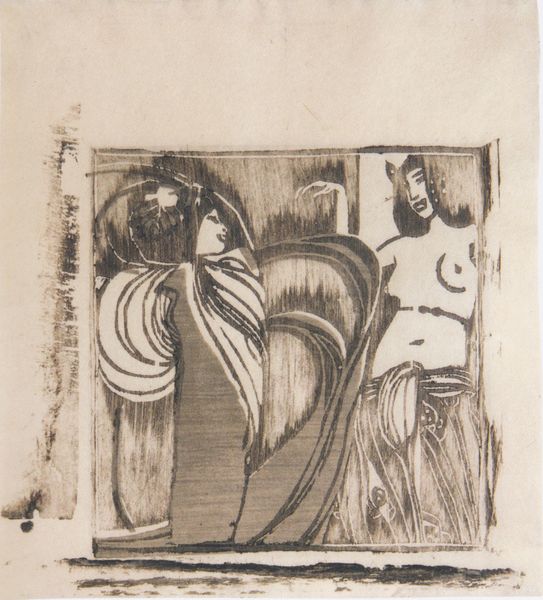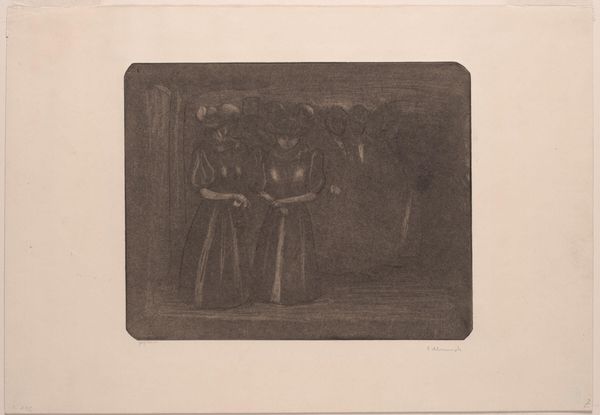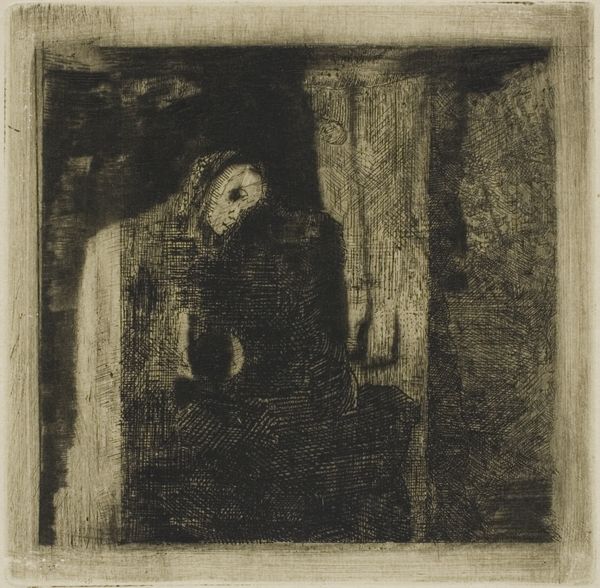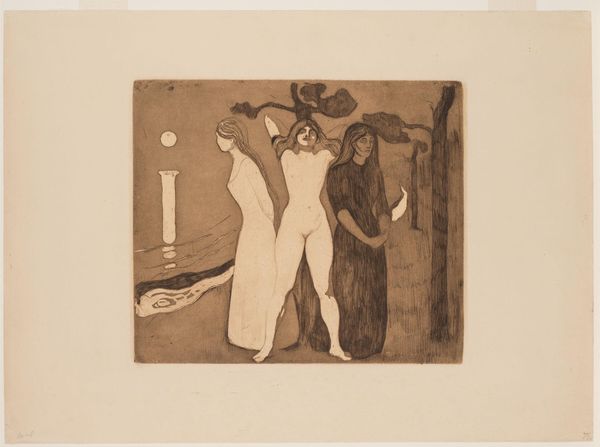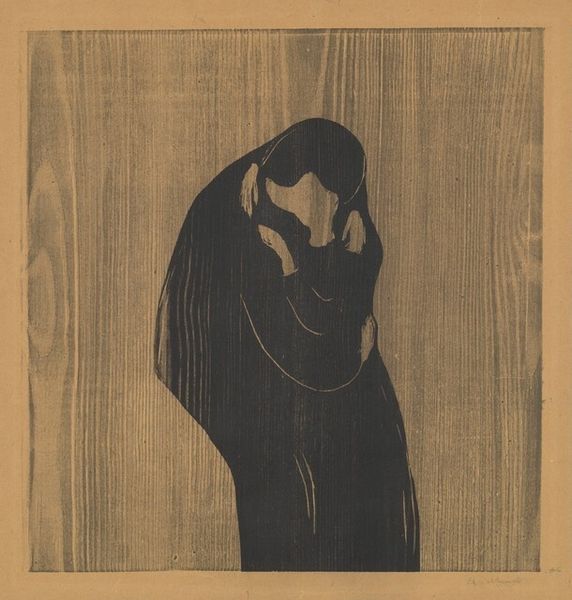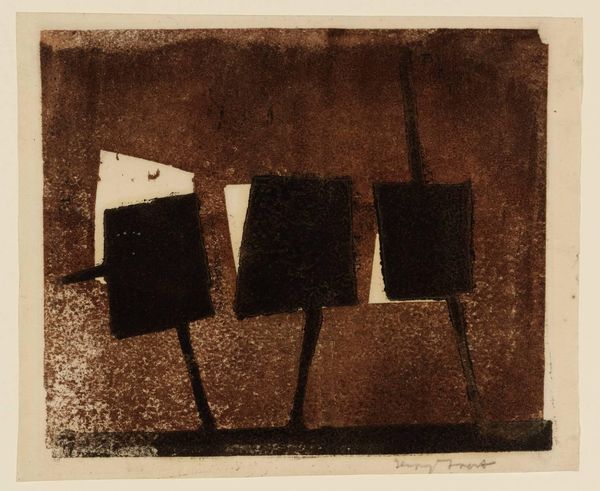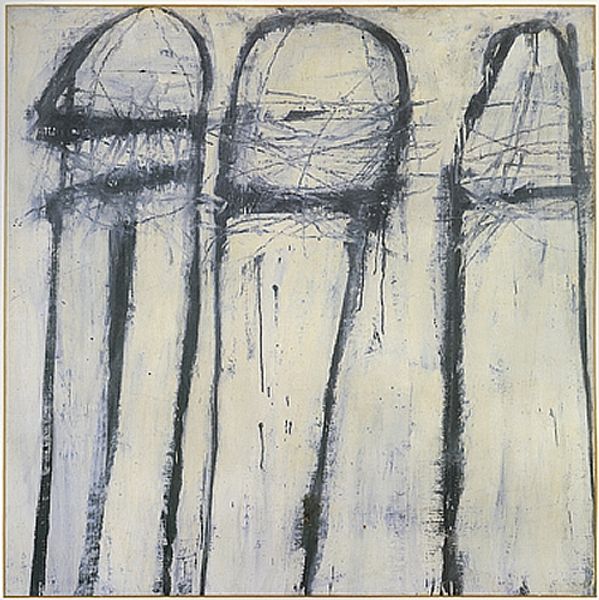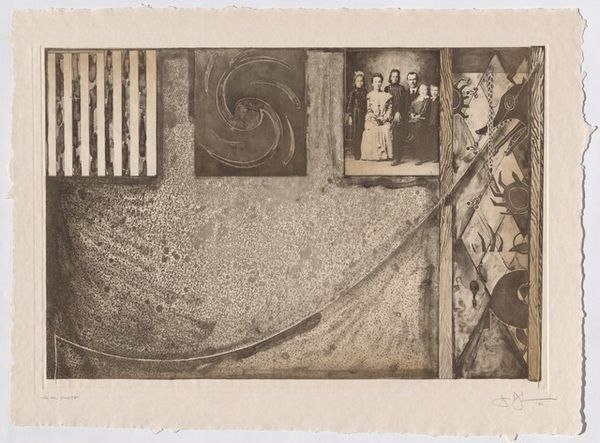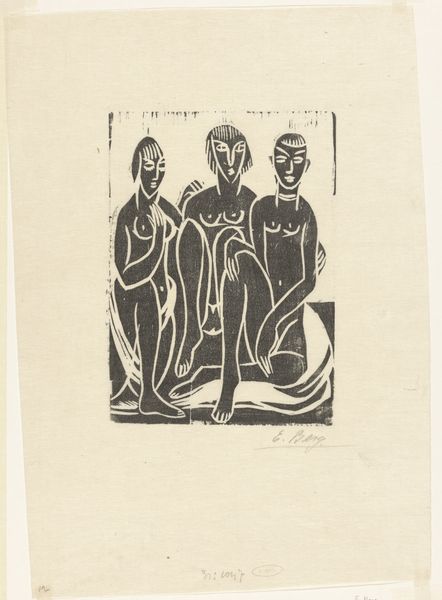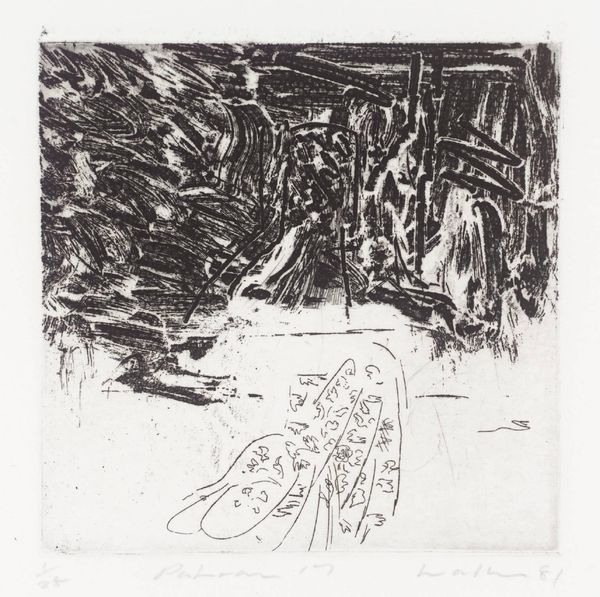
drawing, graphic-art, print, etching
#
drawing
#
graphic-art
# print
#
etching
#
charcoal drawing
#
figuration
#
coloured pencil
#
line
#
symbolism
Dimensions: 21.3 x 23 cm
Copyright: Public domain
Curator: Here we have Koloman Moser’s etching titled "November," created in 1902. What are your immediate impressions? Editor: Stark and somber. The muted palette and looming figures evoke a distinct feeling of melancholic introspection, a sense of waiting. It's compelling. Curator: Indeed. Considering its creation during the Vienna Secession movement, Moser was interested in uniting fine art with applied arts. He often explored the simplification of form and function across various media. The etching process itself, biting into the metal plate, allowed for such striking contrasts and textures we see here. The labor is so apparent. Editor: And those contrasts are central. Notice how the stark white faces peek from the darkness. Semiotically, white often suggests purity or a blank slate, sharply contrasting with the cloaked anonymity of the figures. The artist also cleverly uses a vertical rectangular element in the background, countering and reinforcing the figural masses. It balances and intensifies the composition. Curator: Speaking of figures, it makes me consider who they are representing and their social standing. Their heavy cloaks obscure any individuality; the figures become emblems of the season itself. They seem to be heading somewhere; it gives the viewer the sense of seeing individuals at a given moment within an ordinary scenario of pre-war Vienna. The means of production were accessible, allowing for wider distribution, potentially reaching the working and middle classes. Editor: Fascinating point about accessibility. I would also add, speaking from purely visual terms, that the linearity achieved by the artist heightens the artwork's symbolic power. The lines add both literal and psychological dimensions. The use of perspective and the varying depths add to the emotional pull as well. Curator: So, in "November," Moser gives us an artwork deeply rooted in the techniques and social influences of its time. It challenges us to look past the immediate gloom to the production, materiality and labor of an artwork that democratizes fine art practices and processes. Editor: Yes, and aesthetically, we see an ingenious manipulation of formal components that invites an emotional and intellectual experience of isolation and introspection. A powerful expression encapsulated in form.
Comments
No comments
Be the first to comment and join the conversation on the ultimate creative platform.
